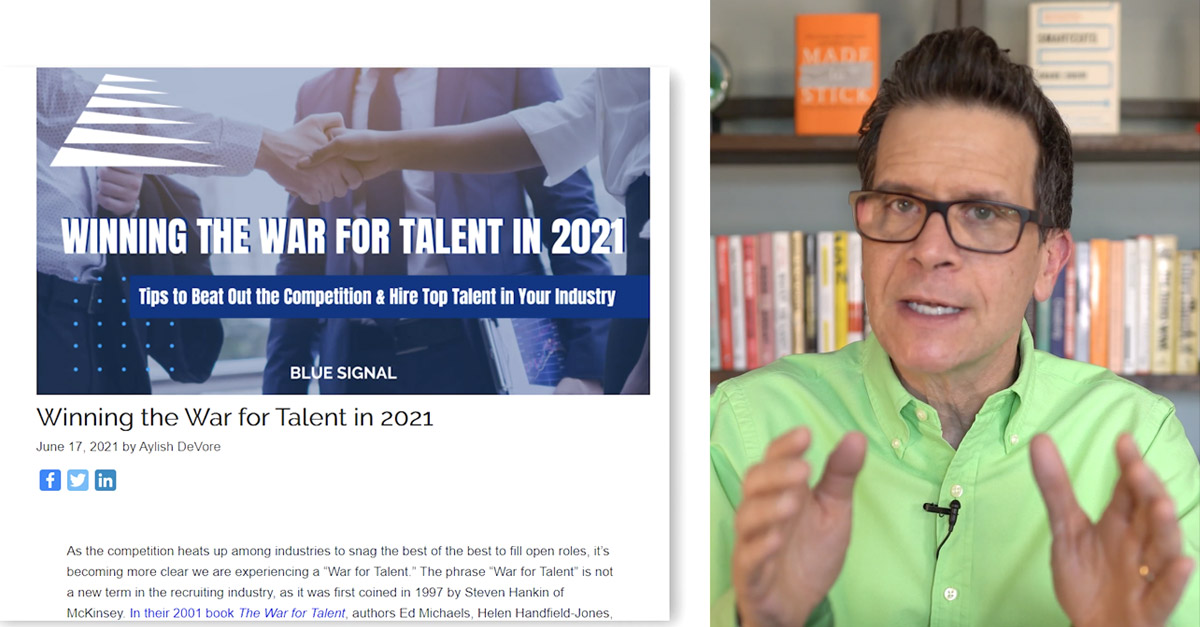Nine out of 10 people are currently in consideration of a job change. 51% of them are doing something about it, researching, posting their resume, talking to their friends and colleagues..
Tim Sanders shares how important it is that leaders move "upstream" in their mitigation efforts towards retaining their talented employees by being strategic, not reactive. Get the market edge by being proactive in your strategy to support your people - your business success depends upon it.
VIDEO TRANSLATION
Starting in 2018, researchers begin to call for War For Talent, part two, pointing to an ever-tightening full-time job market in categories ranging from technology to marketing, creative design, analytics, and all forms of knowledge work.
And, then in the spring of 2020, here comes the COVID pandemic, which ushered in a wave of burnout over the coming months. And today, we have a crisis bubbling up between workers and leaders — it's a conflict about whether you continue to work at home, or you have to go in to the “risk” environment of the office. Millions will leave for that reason alone.
And then, there's been a paradigm shift for so many who now consider the importance of life versus the importance of the job at hand. That's why in May of this year, economists started to call for the Great Resignation — a wave of millions of people leaving their current jobs.
Now, I've reviewed these numbers, so consider this. Nine out of 10 people are currently in consideration of a job change. 51% of them are doing something about it, researching, posting their resume, talking to their friends and colleagues. The most conservative prediction I've seen suggests that 25% of workers will job leap in 2022.
Recent research at Upwork also finds that 10 million people that are leaving the full-time workforce are considering never coming back, choosing instead the flexibility of becoming a freelancer. As one executive recently quipped, "The skills gap is turning into a skills canyon." Now what does this mean to you?
Well, if they're not already, your managers are going to be drowning in digital transformation or business growth debt, where they cannot resource the work as requirements pile up. Customer service backlogs will drag down your reputation, projects will run late or never get launched, programs will get cancelled, and for so many companies, business will grind to a halt.
But, those companies that think "upstream," putting a prevention in place for this discontinuity — they will gain a market edge over those that don't for years to come. Just consider the case of information technology — CIO Dive documents that your managers are losing 3 to 9 hours every week trying to use talent acquisition, or antiquated staffing solutions to fill their skills gaps.
I think that the difference between thinking tactical and thinking strategic comes down to which end of the stream you're looking at. If you think prevention, solving a problem before it happens, you're thinking "upstream" and that’s strategic.
If you're reactive, that's thinking "downstream" — for your company, that's an incredible risk.




